Table of Contents
Claude Debussy: The 100 most inspiring musicians of all time
The works of French composer Claude Debussy (Achilles-Claude Debussy) (b. Aug. 22, 1862, Saint-German-en-Laye, France —d. March 25, 1918, Paris) have been a seminal force in the music of the 20th century. Debussy developed a highly original system of harmony and musical structure that expressed in many respects the ideals to which the impressionist and symbolism painters and writers of his time aspired.
Early Period
Debussy showed a gift as a pianist by the age of nine. He was encouraged by Madame Mauté de Fleurville, who was associated with the Polish composer Frédéric Chopin, and in 1873 he entered the Paris Conservatory, where he studied the piano and composition, eventually winning in 1884 the Grand Prix de Rome with his cantata L’Enfant prodigue (The Prodigal Child ).
While living with his parents in a poverty-stricken suburb of Paris, he unexpectedly came under the patronage of a Russian millionairess, Nadezhda Filaretovna von Meck, who engaged him to play duets with her and her children. He traveled with her to her palatial residences throughout Europe during the long summer vacations at the Conservatory. In Paris during this time he fell in love with a singer, Blanche Vasnier, the beautiful young wife of an architect; she inspired many of his early works.

This early style is well illustrated in one of Debussy’s best-known compositions, Clair de Lune. The title refers to a folk song that was the conventional accompaniment of scenes of the love-sick Pierrot in the French pantomime; and indeed the many Pierrot-like associations in Debussy’s later music, notably in the orchestral work Images (1912) and the Sonata for Cello and Piano (1915; originally titled Pierrot fâché avec la lune [“Pierrot Vexed by the Moon”]), show his connections with the circus spirit that also appeared in works by other composers.
Claude Debussy’s Sheet Music download.
Middle Period
As a holder of the Grand Prix de Rome, Debussy was given a three-year stay at the Villa Medici, in Rome, where, under what were supposed to be ideal conditions, he was to pursue his creative work. Debussy eventually fled from the Villa Medici after two years and returned to Blanche Vasnier in Paris. At this time Debussy lived a life of extreme indulgence. Once one of his mistresses, Gabrielle (“Gaby”) Dupont, threatened suicide. His first wife, Rosalie (“Lily”) Texier, a dressmaker, whom he married in 1899, did in fact shoot herself, though not fatally, and, Debussy himself was haunted by thoughts of suicide.
The main musical influences on Debussy were the works of Richard Wagner and the Russian composers Aleksandr Borodin and Modest Mussorgsky. Wagner fulfi lled the sensuous ambitions not only of composers but also of the symbolist poets and the impressionist painters.
Wagner’s conception of Gesamtkunstwerk (“total art work”) encouraged artists to refi ne upon their emotional responses and to exteriorize their hidden dream states, often in a shadowy, incomplete form; hence the more tenuous nature of the work of Wagner’s French disciples.
It was in this spirit that Debussy wrote the symphonic poem Prélude à l’après-midi d’un faune (1894). Other early works by Debussy show his affinity with the English Pre-Raphaelite painters; the most notable of these works is La Damoiselle élue (1888), based on The Blessed Damozel (1850), a poem by the English poet and painter Dante Gabriel Rossetti.
In the course of his career, however, which covered only 25 years, Debussy was constantly breaking new ground. His single completed opera Pelléas et Mélisande (first performed in 1902) demonstrates how the Wagnerian technique could be adapted to portray subjects like the dreamy nightmarish figures of this opera who were doomed to self-destruction.
Debussy and his librettist, Maurice Maeterlinck, declared that they were haunted in this work by the terrifying nightmare tale of Edgar Allan Poe, The Fall of the House of Usher. The style of Pelléas was to be replaced by a bolder, more highly coloured manner. In his seascape La Mer (1905) he was inspired by the ideas of the English painter J. M.W. Turner and the French painter Claude Monet. In his work, as in his personal life, he was eager to gather experience from every region that the imaginative mind could explore.
Late Period
In 1905 Debussy’s illegitimate daughter, Claude-Emma, was born. He had divorced Lily Texier in 1904 and subsequently married his daughter’s mother, Emma Bardac. For his daughter he wrote the piano suite Children’s Corner (1908).
Debussy’s spontaneity and the sensitive nature of his perception facilitated his acute insight into the child mind, an insight noticeable particularly in Children’s Corner; in the Douze Préludes, two books (1910, 1913; “Twelve Preludes”), for piano; and in the ballet La Boîte à joujoux (1st perf. 1919;
The Box of Toys). In his later years, it is the pursuit of illusion that marks Debussy’s instrumental writing, especially the strange, otherworldly Cello Sonata. This noble bass instrument takes on, in chameleon fashion, the character of a violin, a flute, and even a mandolin.
Evolution of His Work
Debussy’s music marks the first of a series of attacks on the traditional language of the 19th century. He did not believe in the stereotyped harmonic procedures of the 19th century, and indeed it becomes clear from a study of mid-20th-century music that the earlier harmonic methods were being followed in an arbitrary, academic manner.
Debussy’s inquiring mind similarly challenged the traditional orchestral usage of instruments. He rejected the traditional dictum that string instruments should be predominantly lyrical. The pizzicato scherzo from his String Quartet (1893) and the symbolic writing for the violins in La Mer, conveying the rising storm waves, show a new conception of string colour. Similarly, he saw that woodwinds need not be employed for fireworks displays; they provide, like the human voice, wide varieties of colour.
Debussy also used the brass in original colour transformations. In fact, in his music, the conventional orchestral construction, with its rigid woodwind, brass, and string departments, finds itself undermined or split up in the manner of the Impressionist painters. Ultimately, each instrument
becomes almost a soloist, as in a vast chamber-music ensemble. Finally, Debussy applied an exploratory approach to the piano, the evocative instrument par excellence.
In his last works, the piano pieces En blanc et noir (1915; In Black and White) and in the Douze Études (1915; “Twelve Études”), Debussy had branched out into modes of composition later to be developed in the styles of Stravinsky and the Hungarian composer Béla Bartók. It is certain that he would have taken part in the leading movements in composition of the years following World War I. His life, however, was tragically cut short by cancer.
The Best of Debussy
Pianist: Pascal Rogé
Track List:
Arabesque Nº1 4:21 Arabesque Nº2 7:49 Clair De Lune 13:29 Passepied 16:46 Rêverie 21:40 Hommage A Rameau 29:22 Voiles 33:41 Les Sons Et Les Parfums Tournent Dans L’air Du Soir 37:58 La Fille Aux Cheveux De Lin 41:02 La Cathédral Engloutie 48:10 Musiciens 50:35 Le Petit Berger 54:05 Golliwogg’s Cakewalk 57:13 L’isle Joyeuse 1:03:35 Prelúdio para a tarde de um fauno
Browse in the Library:
| Artist or Composer / Score name | Cover | List of Contents |
|---|---|---|
| Silent Hill Theme (Piano) |
 |
|
| Silent Hill Theme Piano Solo By Akira Yamaoka |
 |
|
| Silent Hill Theme V2 |
 |
|
| Silent Night – Guitar TABlature |
 |
|
| Silent Voice OST Lit Guitar with TABs |
 |
|
| Silenzi dopo Silenzi (La Piovra 3) Ennio Morricone | ||
| Siloti Four etudes after the Cello Suites of J.S. Bach | Siloti-Bach JS transcriptions | |
| Silver Screen Dance (Dirty Dancing 2 – Havana Nights OST) Heitor Pereira | ||
| Silverchair – After All These Years | ||
| Silverchair – Asylum | ||
| Silvestrov, Valention – Bagatellen Op. 1 to 5 for Piano für Klavier |
 |
|
| Silvio Rodriguez – Cancionero Para Guitarra & TABs |
 |
Cancionero de Silvio Rodríguez |
| Simon & Garfunkel The Essential |
 |
Simon & Garfunkel – Essentials PVG 142p |
| Simon & Garfunkel – Scarborough Fair | ||
| Simon & Garfunkel Guitar Chords Songbook with Tablature |
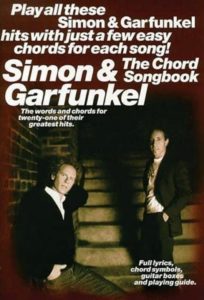 |
Simon And Garfunkel Guitar Songbook |
| Simon & Garfunkel Hits (Piano, guitar & voice) by Marcel Dadi Finger Picking |
 |
Simon And Garfunkel Hits |
| Simon & Garfunkel’s – Greatest Hits (Songbook) |
 |
Simon & Garfunkel’s greatest hits |
| Simon & Gartfunkel – Sound Of Silence | ||
| Simon & Garfunkel – Bridge Over Troubled Water (Original by Paul Simon) | Paul Simon Anthology Bridge Over Troubled Water 1st page | |
| Simon and Garfunkel – Scarborough Fair – Paul Piano Solo Arr |
 |
|
| Simon and Garfunkel – Scarborough Fair – Paul Piano Solo Arr.mscx | ||
| Simon And Garfunkel – Scarborough Fair Canticle (Musescore File).mscz | ||
| Simple Jazz (Chinese) 简易爵士风特辑 世界经典流行音乐改编的爵士风格钢琴曲 (罗枢,边丽娜主编) |
 |
|
| Simple Plan – Perfect | ||
| Simple Plan – Untitled | ||
| Simple Symphony – (Benjamin Britten) | ||
| Simple Symphony – (Benjamin Britten) 2 pianos | ||
| Simply Beautiful Piano – Easy to play arrangements that make you sound great by Preston Keys |
 |
Simply Beautiful Piano – Easy to play arrangements |
| Simply Beautiful Piano Volume 1 – Easy to play arrangements that make you sound Great by Preston Keys |
 |
Simply Beautiful Piano Volume 1 – Easy to play arrangements that make you sound Great by Preston Keys_repaired |
| Simply Red – Home | ||
| Simply Red – Stars | ||
| Simply Red Greatest Hits |
 |
Simply Red Greatest Hits |
| Simpsons, Theme from the Sheet Music – Danny Elfman |
 |
|
| Sinead O Connor – Nothing Compares 2 U | ||
| Sing, Sing, Sing (Louis Prima) As Performed By Benny Goodman (Piano Solo Arr. Sheet Music, Noten) | Sing, Sing, Sing (Louis Prima) As Performed By Benny Goodman (Piano Solo Arr. Sheet Music, Noten) | |
| Sing, Sing, Sing (Louis Prima) as performed by BENNY GOODMAN (Piano Solo arr. sheet music, Noten).mscz | ||
| Singing Blackbird (Musescore File).mscz | ||
| Singing Grammar Teaching Grammar Through Songs (Cambridge) (Mark Hancock) Book |
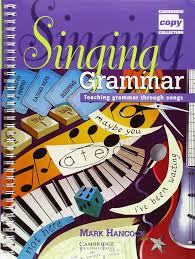 |
|
| Sister Act Piano Vocal guitar Highlights |
 |
Sister Act Piano Vocal guitar Highlights |
| Six (The Musical) Heart Of Stone |
 |
|
| Skeeter Davis End Of The World |
 |
|
| Skoryk , Myroslav Mykhailovych Melody – Piano Solo arr. |
 |
|
| Skyrim – Dragonborn Theme Song Piano Solo by Jeremy Soule | Skyrim – Dragonborn Theme Song Piano Solo by Jeremy Soule | |
| Skyrim – Dragonborn Theme Song Piano Solo By Jeremy Soule (Musescore File).mscz | ||
| Skyrim Jeremy Soule Secunda |
 |
|
| Skyworld (Game Piano Solo) Two Steps From Hell by Thomas Bergersen |
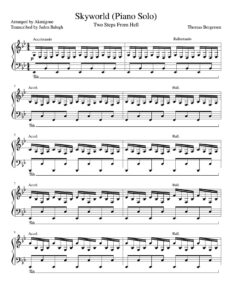 |
|
| Slade My Oh My |
 |
|
| Slash Guitar Anthology Guitar Tab |
 |
Slash Guitar Anthology Guitar Tab |
| Sleeping Lotus – Joep Beving (Musescore File).mscz | ||
| Sleeping Lotus Joep Beving |
 |
|
| Sleigh Ride Piano Solo Leroy Anderson | Sleigh Ride Piano Solo Leroy Anderson | |
| Slide Guitar TAB Collection 25 Great Slide Tunes In Standard Tuning Brent Robitaille |
 |
|
| Smash Hits. Playalong For Alto Saxophone (by Paul Honey) |
 |
Smash Hits. Playalong For Alto Saxophone (by Paul Honey) |
| Smash Pop Hits 1999 2000 Easy Piano |
 |
Smash Pop Hits 1999 2000 Easy Piano |
| Smashing Pumpkins – Blank Page | ||
| Smashing Pumpkins – Siamese Dream Songbook |
 |
Smashing Pumpkins – Siamese Dream Songbook |
| Smashing Pumpkins – Thirty Three | ||
| Smashing Pumpkins – Today | ||
| Smetana The Moldau Vltava (Easy Piano Solo) |
 |
|
| Smetana – The Moldau – Vltava (Easy Piano Solo) (Musescore File).mscz | ||
| Smetana “Má Vlast” Vltava (arr. 2 pianos) | ||
| Smile (Charles Chaplin) Jazz Piano Solo arr. sheet music |
 |
|
| Smoke on the Water The Deep Purple Story (Dave Thompson) Book |
 |
|
| Smoky Mountain Gospel Favorites |
 |
Smoky Mountain Gospel Favorites |
| Snail’s House Lullaby (Keitaro Ujiie) | Snail’s House Lullaby Keitaro Ujiie | |
| Snow Patrol Donet Give In | Snow Patrol Donet Give In | |
| Snow Patrol – Chasing Cars | Snow Patrol – Chasing Cars | |
| Snow Patrol -Set The Fire To The Third Bar Feat Martha Wainwright | Snow Patrol Donet Give In | |
| Snow Patrol Eyes Open |
 |
Snow Patrol Eyes Open |
| So in love (De-Lovely OST) Cole Porter | ||
| Sofiane Pamart Bore Alis Live For Cercle |
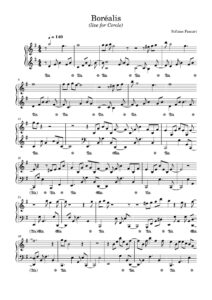 |
|
| Sofiane Pamart Love (Letter) |
 |
|
| Sofiane Pamart Miedo |
 |
|
| Soft Machine Collection songbook | Soft Machine Collection songbook | |
| Softly as in a Morning Sunrise – Romberg & Hammerstein |
 |
|
| Solace – Scott Joplin (Musescore File).mscz | ||
| Soldier in the Rain (Henry Mancini) | ||
| Solfège des Enfants Op. 27 Ear Training Dictados Musicales Gehörbildung Solfejos by Alexis de Garaudé |
 |
|
| Solfejos Op27 Alexis De Garaude (text in Portuguese) |
 |
|
| Solitude – Chère Louise OST (Georges Delerue) | ||
| Solitude – Mort d’un pourri OST (Philippe Sarde) | ||
| Solitude (Musescore File).mscz | ||
| Solo Jazz Piano The linear approach (Neil Olmstead) with MP3 audio tracks |
 |
|
| Someday My Prince Will Come (Yoko Kanno, arr.) Frank ChurchillJazz Piano Solo arr. sheet music |
 |
|
| Someone To Watch Over Me – Gershwin |
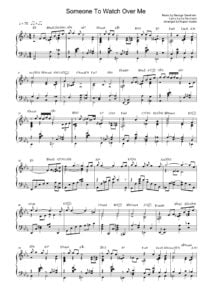 |
|
| Something Corporate – 21 & Invincible | ||
| Something Corporate – Down | ||
| Something Corporate – Hurricane | ||
| Something Corporate – She Paints Me Blue | ||
| Something George Harrison (Fragment) (Musescore File).mscz | ||
| Something In The Water Sheet Music Piano Vocal Guitar by Chris Destefano Carrie Underwood and Brett James |
 |
|
| Something Rotten (Musical) I Love the Way |
 |
|
| Something Rotten Audition Sides by Wayne Kirkpatrick and Karey Kirkpatrick |
 |
|
| Something Rotten! Keyboard – Conductor Score Wayne Kirkpatrick And Karey Kirkpatrick |
 |
|
| Sometimes when it rains – Half A World Away (Secret Garden) | ||
| Somewhere In Time – John Barry (Musescore File).mscz | ||
| Somewhere In Time Theme John Barry |
 |
somewhere in time theme |
| Somewhere Over The Rainbow (piano vocal with lyrics in English and Français) |
 |
|
| Somewhere Over The Rainbow Israel Kamakawio ole.mscz | ||
| Sonata Album for the piano (26 favorite) Haydn, Mozart and Beethoven Book 1 & 2 | Sonata Album for the piano (26 favorite) Haydn, Mozart and Beethoven Book 1 & 2 | |
| Sonata de Elami – Padre Basilio (Guitarra) arr. Carles Trepat | Sonata de Elami – Padre Basilio (Guitarra) arr. Carles Trepat | |
| Sonata No. 15 Op 28 (Musescore File).mscz | ||
| Sonate No. 14 Moonlight 1st Mov. (Musescore File).mscz | ||
| Sondheim – A Little Night Music (Full Score) |
 |
Sondheim – A Little Night Music (Vocal Score) |
| Sondheim For Piano Solo Phillip Keveren Series (Stephen Sondheim) |
 |
Sondheim For Piano Solo Phillip Keveren Series (Stephen Sondheim) |
| Sondheim On Music Minor Details Major Decisions By Mark Eden Horowitz (Book) |
 |
|
| Sondheim On Sondheim The Musical Piano Vocal Score |
 |
Sondheim On Sondheim The Musical Piano Vocal Score |
| Sondheim, Stephen – Sunday from Sunday in the Park with George | Sondheim, Stephen – Sunday from Sunday in the Park with George | |
| Song From A Secret Garden (by Rolf Lovland) | Song From A Secret Garden(by Rolf Lovland) | |
| Songbird (Eva Cassidy) | ||
| Songbook Piano 50 Popular Songs Really Easy Piano Collection Book |
 |
Songbook Piano 50 Popular Songs Really Easy Piano Collection Book |
| Songs From Around The World Easy Sheet Music |
 |
|
| Songs Of The 80’s Songbook |
 |
Songs Of The 80s Songbook |
| Songs Of The Eighties – More (The Decade Series) |
 |
Songs Of The Eighties – More (The Decade Series) |
| Songs The World Sings Piano Vocal Guitar |
 |
Songs The World Sings Piano Vocal Guitar |
| SONGS THE WORLD SINGS – Songbook |
 |
SONGS THE WORLD SINGS – Songbook |
| Songs With A Classical Touch 40 selections of piano solo |
 |
Songs With A Classical Touch 40 selections of piano solo |
| Songwriting And The Guitar Book The complete guide (eBook) |
 |
Songwriting And The Guitar Book The complete guide (eBook) |
| Sonic – Angel Island_Easy |
 |
|
| Sonic Adventure – Lost World (Tricky Maze) |
 |
